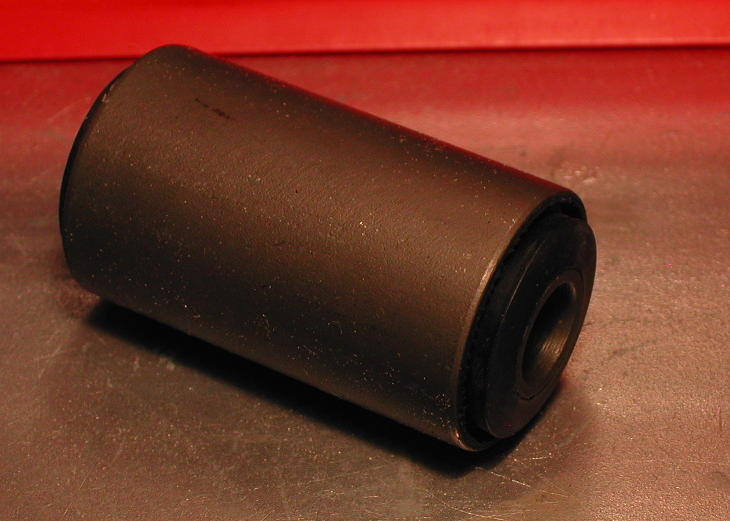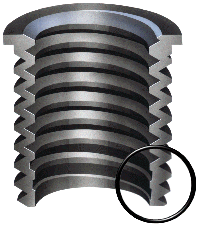|
Bushing (other)
Bushing may refer to: *Bushing (bearing), a type of plain bearing * Bushing (electrical), an insulated device that allows a conductor to pass through a grounded conducting barrier *Bushing (isolator) A bushing or rubber bushing is a type of vibration isolator. It provides an interface between two parts, damping the energy transmitted through the bushing. A common application is in vehicle suspension systems, where a bushing made of rubbe ..., a mechanical device used to reduce vibrational energy transfer between two parts * Drill bushing, a tool used to guide the placement of a holes when drilling in a workpiece * Threaded bushing, a metal sleeve with screw threads See also * Büsching (other) {{disambig ... [...More Info...] [...Related Items...] OR: [Wikipedia] [Google] [Baidu] |
Bushing (bearing)
A plain bearing, or more commonly sliding contact bearing and slide bearing (in railroading sometimes called a solid bearing, journal bearing, or friction bearing), is the simplest type of bearing, comprising just a bearing surface and no rolling elements. Therefore, the journal (i.e., the part of the shaft in contact with the bearing) slides over the bearing surface. The simplest example of a plain bearing is a shaft rotating in a hole. A simple linear bearing can be a pair of flat surfaces designed to allow motion; e.g., a drawer and the slides it rests on or the ways on the bed of a lathe. Plain bearings, in general, are the least expensive type of bearing. They are also compact and lightweight, and they have a high load-carrying capacity. Design The design of a plain bearing depends on the type of motion the bearing must provide. The three types of motions possible are: * ''Journal'' (''friction'', ''radial'' or ''rotary'') ''bearing'': This is the most common type of ... [...More Info...] [...Related Items...] OR: [Wikipedia] [Google] [Baidu] |
Bushing (electrical)
In electric power, a bushing is a hollow electrical insulator that allows an electrical conductor to pass safely through a conducting barrier such as the case of a transformer or circuit breaker without making electrical contact with it. Bushings are typically made from porcelain, though other insulating materials are also used. Explanation All materials carrying an electric charge generate an electric field. When an energized conductor is near a material at earth potential, it can form very high field strengths, especially where the field lines are forced to curve sharply around the earthed material. The bushing controls the shape and strength of the field and reduces the electrical stresses in the insulating material. Bushing condenser A bushing must be designed to withstand the electrical field strength produced in the insulation, when any earthed material is present. As the strength of the electrical field increases, leakage paths may develop within the insulation. If th ... [...More Info...] [...Related Items...] OR: [Wikipedia] [Google] [Baidu] |
Bushing (isolator)
A bushing or rubber bushing is a type of vibration isolator. It provides an interface between two parts, damping the energy transmitted through the bushing. A common application is in vehicle suspension systems, where a bushing made of rubber (or, more often, synthetic rubber or polyurethane) separates the faces of two metal objects while allowing a certain amount of movement. This movement allows the suspension parts to move freely, for example, when traveling over a large bump, while minimizing transmission of noise and small vibrations through to the chassis of the vehicle. A rubber bushing may also be described as a flexible mounting or antivibration mounting. These bushings often take the form of an annular cylinder of flexible material inside a metallic casing or outer tube. They might also feature an internal ''crush tube'' which protects the bushing from being crushed by the fixings which hold it onto a threaded spigot. Many different types of bushing designs exist. A ... [...More Info...] [...Related Items...] OR: [Wikipedia] [Google] [Baidu] |
Drill Bushing
A drill bushing, also known as a jig bushing, is a tool used in metalworking jigs to guide cutting tools, most commonly drill bits. Other tools that are commonly used in a drill bushing include counterbores, countersinks, and reamers. They are designed to guide, position, and support the cutting tool.. In the USA, Customary sized bushings are standardized via ASME B94.33 and metric bushings are standardized via ASME B94.33.1.. There are over 50,000 standard configurations of customary sized bushings. Types Drill bushings can generally be classified as: ''press fit'' bushings or ''renewable'' bushings. Other classification methods include by head type, by use, and by liner type (or lack thereof). Press-fit bushings Press fit are available in two types with liners or without (''wearing'' bushings). Liner bushings, sometimes called ''master bushings'', are permanently installed into the jig and accept liners that can easily be replaced. Press-fit wearing bushings are used in shor ... [...More Info...] [...Related Items...] OR: [Wikipedia] [Google] [Baidu] |
Threaded Bushing
A threaded insert, also known as a threaded bushing, is a fastener element that is inserted into an object to add a threaded hole. They may be used to repair a stripped threaded hole, provide a durable threaded hole in a soft material, place a thread on a material too thin to accept it, mold or cast threads into a work piece thereby eliminating a machining operation, or simplify changeover from unified to metric threads or vice versa. Types Thread inserts come in many varieties, depending on the application. Threaded inserts for plastics are used in plastic materials and applied with thermal insertion or ultrasonic welding machines. Manufacturers of ready-to-assemble furniture often ship the parts with threaded inserts and other kinds of knock-down fasteners pre-installed. People who use sheet metal or sandwich panel or honeycomb sandwich-structured composite often install threaded inserts to spread shear, tension, and torque loads over a larger area of the material. Captive ... [...More Info...] [...Related Items...] OR: [Wikipedia] [Google] [Baidu] |




